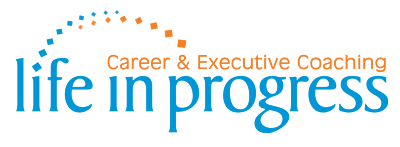
by Deanna Parkton and Ed Hunter
Have you ever thought to yourself “If you want something done right, do it yourself?”
The adage is a double edged sword. On one side, self-reliance can stimulate initiative and independence. But it may also cause isolation and avoidance.
Avoiding working with others on a project because it could be more time consuming and more challenging is understandable. “Group Work” can surface difficult differences of opinion, communication challenges or varying agendas. And collaboration does take time.
But the benefits of collaboration are clear. Not only can collaboration yield better results on the project-or-problem at hand, it can help those who are involved. Partnering with others allows you to identify new ideas and solutions, and find new ways to present information.
A blog on LinkedIn written by Lorraine Garvie cites a few of the benefits of collaboration including:
- Higher productivity
- Improved employee engagement
- Increased learning opportunities for collaborators.
While it may feel daunting to increase partnerships on work initiatives, here are some small ways that you can increase your collaboration across and outside of your team.
Ask others for their feedback
Before submitting a first draft, proposal or slidedeck, ask a few colleagues if they would mind taking a look and sharing any comments or suggestions they have. Be sure to give them an out if they do not have the bandwidth to do so, and also provide a fair amount of time before your deadline. First select colleagues based on the content within the project – i.e. if one of your teammates worked on a similar initiative in the past, they would certainly be a great resource to solicit their ideas. Be sure to provide context when you reach out to your teammates, such as “I’m working on the ____ project and remembered that you did something similar last quarter. Do you have the bandwidth to do a quick review of this slidedeck and share any feedback by this Thursday? Particularly slides 9-11, they relate closest to your content area. If you don’t have the time this week, no problem! Let me know what you think.” This provides the other person with important information such as the why, how, when and why.
Invite others in on projects
If you are given a task (even if it is a small lift), consider asking leadership if they minded if you connected with a few others on the project to get some more insight and resources across teams. You can also invite others in with a low level of commitment in terms of their involvement, i.e. “I’m starting a project around (context). Would you be interested in chatting more about this project, whether it’s providing some general feedback as part of the brainstorm process, or getting involved with the implementation? You can decide how involved you’d like to be based on your bandwidth.”
Initiate brainstorming sessions
Even if you are not seeking partners to be heavily involved in a project, it may be appropriate to invite others in on a brainstorming session. This is a great way to not only collect more ideas and insights, but it also can help you create buy-in. Those that participated in the brainstorm process are more likely to be on board with an idea during the implementation process. Brainstorming sessions can take place via a meeting or via an online chat or email thread. The purpose is not to present a proposal and gather feedback, but to truly collect raw and loose ideas before the proposal is even created.
If you are thinking “this sounds like more meetings!” you are not alone. Most people dislike meetings! (We will save that topic for a future blog post). In lieu of meetings, think about how you can use technology to initiate and manage communications. For example, ask colleagues to use the “Comment” or “Suggesting” feature when providing feedback via Google Documents. Open up a new channel on SLACK or MS TEAMS. Consider using polls via your company’s communication tool or email to solicit feedback on an idea or solution. Google Forms can also be used to solicit feedback via a survey or poll.
There is so much to gain from increasing your collaboration within and across teams. Not only do you gain exposure within your organization, you will be seen as a connector and someone who brings people together to make things happen!
For more ideas on how you can strategize your work, consider working with a career coach. A coach can help you identify strategies to face challenges head on. Check out our executive coaching services and sign up for a free consultation here.
Deanna Parkton is a writer, career coach and educator with a passion for professional development and work wellness and happiness. With a focus on self-reflection, she works with individuals in their quest to reach their career goals as well as satisfaction in work-life balance. You can find more of her writing at workinglivingwell.com and she can be reached at workinglivingwell@gmail.com.
Ed Hunter is a Professional Career and Executive Coach and principal of Life in Progress Coaching. He is certified by the international Coaching Federation as a Professional Certified Coach.. He is also a Certified Executive and Leadership Development Coach. Ed has coached over a thousand professionals to create authentic careers and balanced work lives, and has a special interest in career development for adults with Autism. To connect with Ed, schedule a free consultation here.
